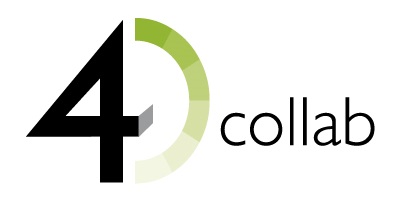The research project "4DCollab" has the objective of analyzing collaborative practices and usages of 4D technics during the pre-construction phase and evaluating its contribution to construction projects.
The second objective is to identify and understand emerging practices for collaboration using both 3D semantic modeling and time during the pre-construction phase and to measure the contribution in terms of value and quality of projects. Thirdly, it plans to identify and define innovative usages and interactions with 4D models through suitable devices (i.e. touch table and wall) in a prospective ergonomics approach. Finally, these new interactions dedicated to uses of 4D will be specified and integrated to the synchronous collaborative platform "Shariiing" of Immersion partner.
The project requires a good understanding of both practices and usages of existing 4D tools and their contributions in the pre-construction activities. This understanding relies on the experiment of existing 4D tools in pre-construction activities. The experiment part of 4DCollab aims to analyze the place of time, and the related business practices, in existing construction scheduling practices. Moreover it targets the assessment of the capabilities of existing 4D tools for improving construction scheduling and architectural design.
4 objectives in detail
Objective 1: Measuring the added value of 4D emerging practices in the preconstruction stage
The first project objective aims to build new knowledge on multi-disciplinary decision making in AEC projects, through the understanding of business processes related to 3D+Time Computer Aided Decision Support.
While the first objective determines the potential of 4D practices and their contribution in terms of added value for AEC projects, the second and third ones bring new knowledge on 4D usages and digital support. They also deal with different domains such as Ergonomics, Human-Computer Interaction, and Software development in order to produce a new “4D CSCW” (Computer-Supported Cooperative Work) tool.
Objective 2: Studying and identifying innovative collaborative 4D work practices with emerging digital collaborative devices through a user-centred approach and cognitive ergonomics.
The second project objective will, from real field experiments with existing 4D CAD tools, enable to evaluate the usability of the tools and to specify new multi-users interaction devices, providing innovative “natural” interaction capabilities to their users, for collaborative design and scheduling sessions in the preconstruction stage of an AEC project.
Studying the ways users interact through existing 4D CAAD digital representations on emerging digital collaborative devices allows improving the utility and usability of the future 4D CAAD CSCW tool. However, in order to innovate, this evaluation phase will implement creativity methods with the users in order to generate ideas that will lead the propositions a step further.
Objective 3: Describing usages and interactions between users through 4D digital devices and developing a 4D collaborative tool
The third project objective relies on the knowledge built by the two first objectives. It consists in specifying and developing a new interaction system to enable better collaboration in the preconstruction stage of AEC project by taking time into account.
The aim is to anticipate time-related constraints, which depend on construction techniques and construction team organization as well as time-related realization of project elements during the construction phase.
Objective 4: Validating collaborative 4D usages and measuring the new added value for preconstruction projects’ teams
The fourth project objective targets the validation of the innovative usages and innovative interactions realized with the new synchronous CSCW tool deployed on emerging digital collaborative devices for improving the collaborative decision process with 4D models amongst AEC project partners.
To go further...
These four objectives take into account the preconstruction stage of the architectural design process: the issue that will be discussed is to identify the ways that 3D+Time scheduling can be a collaborative aided support to organize architectural building. It is to describe the synchronous collocated collaborative work in scheduling construction to build knowledge on it and to adapt the tool for more powerful.
Understanding how time is integrated in preconstruction can help to manage the early stage of architectural design, and in particular accelerate and anticipate the decision making process in order to avoid some construction troubles and to anticipate some collaborative works with the design actors.
